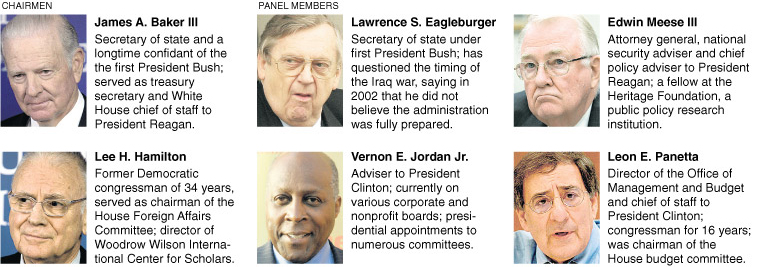“So, the jury listened to all evidence, hears all the experts. You know the verdict is coming.
They announced they had reached a verdict. Then we had to wait several hours for Janet Reno to get there before the judge would let us hear the verdict.
Why did she want to be there?
Again, you’d have to ask her….”
You have no idea of how hard it is for me to continue to insist that the statement in the title of this page is, in the face of the successive abuses of John Ashcroft and Alberto Gonzalez, both of whom have argued that it is or should be legal to arrest and hold people with no charges or evidence, or to torture people, or kidnap them, or imprison them for an indefinite period of time.
Reno didn’t argue that it was legal to abuse people– she just did it. She decided that several innocent people were guilty and should be punished and abused. She was responsible for Waco, which is why she was also responsible in some measure for Oklahoma. So there it is and I stand by it. So the four worst attorney-generals in the history of the United States are: Janet Reno, John Mitchell, John Ashcroft, and Alberto Gonzalez. These are your highest ranking law-enforcement officers, America!
I have nothing new to say about Janet Reno. Here’s what I already said. I just think it’s important that time does not heal this wound: Janet Reno’s breath-taking, vicious incompetence should be broadcast as widely as possible, at least until Frank Fuster is released from jail.
In a nutshell, Frank Fuster was convicted during the hysterical 80’s rash of Satanic Ritual Abuse Cases which, to most sensible people, has now been as thoroughly discredited as the Salem witch trials.
Prosecutors believed that the the children, who almost always initially denied that abuse had taken place, were lying, and had to be “compelled” to give accurate testimony, through hours and hours and hours of interrogation, if necessary. Ileana Fuster, Frank’s wife, was mercilessly bullied, threatened, and frightened into testifying against her husband.
Prosecutors actually threatened to separate her from her children if she did not confess and implicate her husband in the abuse.
This strategy was approved by Janet Reno.
(It is remarkably possible that the prosecutors honestly thought that Frank was guilty. I don’t think that excuses the absolutely militant stupidity with which they proceeded. I say militant stupidity– there’s no other excuse for it.
Behold the intensity of their ignorance and tremble: anyone could be the next victim of their inquisitorial passion.)
The children, under these conditions, would frequently make numerous accusations, often including preposterous incidents like the perpetrator taking the children up in a helicopter and dropping them into a shark-infested pool. The prosecution would rarely– if ever– supply an actual criminal event: a date and time and location– because, of course, they couldn’t. In fact, in several cases, they couldn’t even demonstrate that there was a time and place where the defendant was alone with this victims.
The prosecution would also ignore the more ridiculous charges and bring only the reasonably creditable ones to court, though, in some of the later cases, they were compelled to present all of the testimony, including the fantastical elements. They would then argue that the fantastical elements were child-speak for abuse they could barely comprehend: something must have happened.
Nothing I have ever read about or encountered has done more to depress my view of humanity than these cases.
Not only did prosecutors and judges make utterly inane and reprehensibly stupid judgments about facts, they admitted into court numerous so-called “expert witnesses” who all asserted that Satanic Ritual Abuse was rampant in the United States, that denial of abuse is a symptom of it, that up is down and down is up, and that Alice really did run down the rabbit-hole. Almost without exception, none of these witnesses ever offered any empirical evidence in support of their contentions, either about the prevalence of child-abuse, or of how young children react to abuse. To a large extent, the convictions became the proof that there had to be more convictions.
The Mad Hatter’s best guest at this tea party was the guest who confessed, under horrendous pressures in a plea-bargain arrangement, because that proved that the guest was mad because who else but a mad guest would confess?
Many of the convicted have been released after appeals or retrials.
Frank Fuster is still in jail.
*
After reading more about the case, I became interested in the question that goes to the heart of the entire scandalous series of prosecutions that became known as the Satanic Ritual Abuse cases. At all of these cases, so-called experts testified that though almost all of the children initially denied abuse, and though virtually no external evidence could be adduced (not even as to time and place or opportunity), the prosecutions believed that children almost always deny abuse at first, then disclose, then recant, and so on. This explains why the children initially denied abuse, they assert.
They told the court, we are experts. We have truth. We are reliable.
Nobody seemed able to come to grips with this ephemeral truth. How did they know that abused children rarely disclose when questioned? Well, they would trot out numbers– hundreds of abused children, that we have interviewed…. We know.
But experts for the defense examined the actual research and found that only about 5-8% of abuse victims do not disclose. Isn’t that amazing? That’s quite a discrepancy.
In turns out that the prosecution experts were somewhat cavalier with the data. They didn’t distinguish between validated cases of abuse and cases that they had decided for themselves were valid but may never have been prosecuted. That is a much bigger tea bag.
In an other large study, in which the perpetrator is known to have threatened the children if they disclosed, 66% still disclosed!
Anyway, at least one of Janet Reno’s victims is still in prison. I believe we must never forget to remind Janet Reno that she was the worst attorney-general in the history of the United States.
How to get to wrong: “BT” was one of the alleged victims. Here’s how Prosecutors got her to incriminate the Fusters.
In their first interview with BT, the Bragas repeatedly question the child about a secret game she played with the Fusters, a game BT has never mentioned. When the Bragas ask BT to tell them what the secret game is, BT answers, “I think we played grocery store.” (9/13/85, 54) Joseph Braga, evidencing clear bias, responds, “Grocery store. That is not the secret game. . .” (Id. 54-55) The Bragas continue to ask BT what the secret game is, using anatomical dolls and pretending to be Mr. Fuster asking the question. Then, getting no response from BT that fits their preconceived belief of what happened at the Fuster house, Joseph Braga introduces an idea never mentioned previously by BT. “Do you remember, though, do you remember the baby-sitter sometimes would play games without clothes on? Would she take her clothes off and play some of the games we play without clothes?” (Id. 55) Despite BT’s continued insistence that she knows of no secret game, this theme of questioning was continued through the course of the interview, with both the Bragas and BT’s father alternately insisting that secret games were played and that BT is not being cooperative; suggesting that BT knows about a secret game called the “pee pee” game; and that BT is withholding information because, perhaps like the other children, she is afraid to tell because Frank and Iliana had told the children not to tell. See, e.g. 9/13/85, 62, 63, 66, 68, 73, 74-75, 78, 99 (L. Braga by this time, tells BT that she does not have to talk about what happened to her; she can just tell about what happened to the other children. Again, the implicit bias that something happened to the other children. Id, 99) BT never makes any allegation of abuse during this interview. Laurie Braga concludes the interview, telling BT’s parents that BT is in denial, (Id., 110), another clear showing of bias. From Frontline.
Think about that. If BT had disclosed abuse– under enormous pressure by the Bragas to disclose something, anything salacious: she is finally telling the truth. If she doesn’t– it’s because she is denial. In other words, once the Bragas were involved, there was only one possible outcome of the investigation.
How the inquisitor gets the heretics: “Braga” is a self-styled expert on child abuse who interviewed children on behalf of the Dade County District Attorney’s office. “Leslie” is a made-up name for the alleged victim, a six-year-old girl.
Braga: Yeah; and did you know that grownups are not supposed to touch children’s private places?
Leslie: (Nodding head.)
Uh huh. Do you have a young child? Have you ever given your child a bath?
Was anyone ever executed for a murder he did not commit, in the United States?
“Shandra Whitehead, 8, raped and beaten, died in May 1985. Frank Lee Smith given the death penalty in 1986. Smith was posthumously exonerated through DNA testing, which linked the murder to Mosley.”
Update 2022: we now know that dozens or more innocent men and women have been executed.


